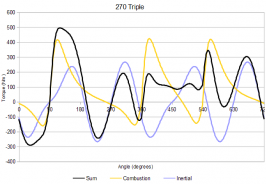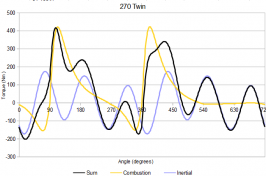Just thought I'd draw attention to something I mentioned previously about how the harmonics of an engine sound dominate our perception.
Specifically, I mentioned that a 288° twin would sound like a 5 cylinder, in a way.
288° is twice 144°, which is 720° (four strokes) divided by 5. The reason I chose 288-432 and not 144-576 is because 144° contains more harmonics and is therefore less distinct; 288 plus 144 is already 432. This is analogous to pickup placement on an electric guitar: the closer to the bridge (where waves in the strings are reflected; like the loop point in a cycle), the more harmonics are captured, but the less "meaty" the sound is.
Well, anyway, KTM have had 75 degree V-Twins for a while and their new "parallel" twin apes these with a 285° crank. The compact packaging of the inline arrangement compared to the V allows for better preserving of the harmonic structure inherent to the firing intervals (remember any unevenness, like in the boxer, can create a different structure altogether)
And so it seems that their 790 Duke, with its 285-435 degree firing intervals, does indeed have a strong five cylinder vibe from the midrange on. Although perhaps the unevenness is more reminiscent of an "odd-fire" V10, like a Viper or R8 / Gallardo / Huracán:
(Edited as original video was deleted)






